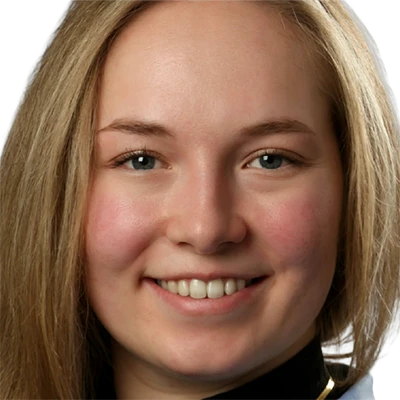Research Group Göran Kauermann
Göran Kauermann
holds the Chair of Applied Statistics in Social Sciences, Economics and Business at LMU Munich.
He conducts research in advanced regression analysis, focusing on generalized additive models and generalized mixed models. His work aims to refine statistical methods for complex data, enhancing their application in various scientific fields.
Team members @MCML
PhD Students
Recent News @MCML
Publications @MCML
2025
[22]
K. Hechinger • C. Schweden • X. Zhu • G. Kauermann
Human-in-the-loop: Towards label embeddings for assessing classification difficulty.
Statistical Modelling Early Access. Oct. 2025. DOI
Human-in-the-loop: Towards label embeddings for assessing classification difficulty.
Statistical Modelling Early Access. Oct. 2025. DOI
[21]
C. Gruber • H. Alber • B. Bischl • G. Kauermann • B. Plank • M. Aßenmacher
Revisiting Active Learning under (Human) Label Variation.
Preprint (Jul. 2025). arXiv
Revisiting Active Learning under (Human) Label Variation.
Preprint (Jul. 2025). arXiv
[20]
L. Meynent • I. Melev • K. Schürholt • G. Kauermann • D. Borth
Structure Is Not Enough: Leveraging Behavior for Neural Network Weight Reconstruction.
Weight Space Learning @ICLR 2025 - Workshop on Weight Space Learning at the 13th International Conference on Learning Representations. Singapore, Apr 24-28, 2025. arXiv URL
Structure Is Not Enough: Leveraging Behavior for Neural Network Weight Reconstruction.
Weight Space Learning @ICLR 2025 - Workshop on Weight Space Learning at the 13th International Conference on Learning Representations. Singapore, Apr 24-28, 2025. arXiv URL
[19]

M. Schneble • G. Kauermann
Statistical modelling of on-street parking spot occupancy in smart cities.
Journal of the Royal Statistical Society. Series C (Applied Statistics).qlaf017. Mar. 2025. DOI
Statistical modelling of on-street parking spot occupancy in smart cities.
Journal of the Royal Statistical Society. Series C (Applied Statistics).qlaf017. Mar. 2025. DOI
2023
[18]

C. Koller • G. Kauermann • X. Zhu
Going Beyond One-Hot Encoding in Classification: Can Human Uncertainty Improve Model Performance in Earth Observation?
IEEE Transactions on Geoscience and Remote Sensing 62. Dec. 2023. DOI GitHub
Going Beyond One-Hot Encoding in Classification: Can Human Uncertainty Improve Model Performance in Earth Observation?
IEEE Transactions on Geoscience and Remote Sensing 62. Dec. 2023. DOI GitHub
[17]
L. Fahrmeir • G. Kauermann • G. Tutz • M. Windmann
Spatial smoothing revisited: An application to rental data in Munich.
Statistical Modelling 23.5-6. Aug. 2023. DOI
Spatial smoothing revisited: An application to rental data in Munich.
Statistical Modelling 23.5-6. Aug. 2023. DOI
[16]

C. Fritz • G. De Nicola • S. Kevork • D. Harhoff • G. Kauermann
Modelling the large and dynamically growing bipartite network of German patents and inventors.
Journal of the Royal Statistical Society. Series A (Statistics in Society) 186.3. Jul. 2023. DOI
Modelling the large and dynamically growing bipartite network of German patents and inventors.
Journal of the Royal Statistical Society. Series A (Statistics in Society) 186.3. Jul. 2023. DOI
2022
[15]

C. Fritz • G. De Nicola • F. Günther • D. Rügamer • M. Rave • M. Schneble • A. Bender • M. Weigert • R. Brinks • A. Hoyer • U. Berger • H. Küchenhoff • G. Kauermann
Challenges in Interpreting Epidemiological Surveillance Data – Experiences from Germany.
Journal of Computational and Graphical Statistics 32.3. Dec. 2022. DOI
Challenges in Interpreting Epidemiological Surveillance Data – Experiences from Germany.
Journal of Computational and Graphical Statistics 32.3. Dec. 2022. DOI
[14]
C. Fritz • M. Mehrl • P. W. Thurner • G. Kauermann
All that Glitters is not Gold: Relational Events Models with Spurious Events.
Network Science 11.2. Sep. 2022. DOI
All that Glitters is not Gold: Relational Events Models with Spurious Events.
Network Science 11.2. Sep. 2022. DOI
[13]
M. Schneble • G. Kauermann
Estimation of Latent Network Flows in Bike-Sharing Systems.
Statistical Modelling 22.2. Aug. 2022. DOI
Estimation of Latent Network Flows in Bike-Sharing Systems.
Statistical Modelling 22.2. Aug. 2022. DOI
[12]
C. Fritz • G. De Nicola • M. Rave • M. Weigert • Y. Khazaei • U. Berger • H. Küchenhoff • G. Kauermann
Statistical modelling of COVID-19 data: Putting generalized additive models to work.
Statistical Modelling 24.4. Aug. 2022. DOI
Statistical modelling of COVID-19 data: Putting generalized additive models to work.
Statistical Modelling 24.4. Aug. 2022. DOI
[11]
C. Fritz
Statistical approaches to dynamic networks in society.
Dissertation LMU München. Jul. 2022. DOI
Statistical approaches to dynamic networks in society.
Dissertation LMU München. Jul. 2022. DOI
[10]

M. Schneble • G. Kauermann
Intensity Estimation on Geometric Networks with Penalized Splines.
Annals of Applied Statistics 16.2. Jun. 2022. DOI
Intensity Estimation on Geometric Networks with Penalized Splines.
Annals of Applied Statistics 16.2. Jun. 2022. DOI
[9]

S. Kevork • G. Kauermann
Bipartite Exponential Random Graph Models with Nodal Random Effects.
Social Networks 70. Jun. 2022. DOI
Bipartite Exponential Random Graph Models with Nodal Random Effects.
Social Networks 70. Jun. 2022. DOI
[8]

C. Fritz • E. Dorigatti • D. Rügamer
Combining Graph Neural Networks and Spatio-temporal Disease Models to Predict COVID-19 Cases in Germany.
Scientific Reports 12.3930. Mar. 2022. DOI
Combining Graph Neural Networks and Spatio-temporal Disease Models to Predict COVID-19 Cases in Germany.
Scientific Reports 12.3930. Mar. 2022. DOI
[7]
G. De Nicola • B. Sischka • G. Kauermann
Mixture Models and Networks: The Stochastic Block Model.
Statistical Modelling 22.1-2. Feb. 2022. DOI
Mixture Models and Networks: The Stochastic Block Model.
Statistical Modelling 22.1-2. Feb. 2022. DOI
[6]

C. Fritz • G. Kauermann
On the Interplay of Regional Mobility, Social Connectedness, and the Spread of COVID-19 in Germany.
Journal of the Royal Statistical Society. Series A (Statistics in Society) 185.1. Jan. 2022. DOI
On the Interplay of Regional Mobility, Social Connectedness, and the Spread of COVID-19 in Germany.
Journal of the Royal Statistical Society. Series A (Statistics in Society) 185.1. Jan. 2022. DOI
2021
[5]
S. Kevork • G. Kauermann
Iterative Estimation of Mixed Exponential Random Graph Models with Nodal Random Effects.
Network Science 9.4. Dec. 2021. DOI
Iterative Estimation of Mixed Exponential Random Graph Models with Nodal Random Effects.
Network Science 9.4. Dec. 2021. DOI
[4]
C. Fritz • M. Mehrl • P. W. Thurner • G. Kauermann
The Role of Governmental Weapons Procurements in Forecasting Monthly Fatalities in Intrastate Conflicts: A Semiparametric Hierarchical Hurdle Model.
International Interactions 48.4. Nov. 2021. DOI
The Role of Governmental Weapons Procurements in Forecasting Monthly Fatalities in Intrastate Conflicts: A Semiparametric Hierarchical Hurdle Model.
International Interactions 48.4. Nov. 2021. DOI
[3]
C. Fritz • P. W. Thurner • G. Kauermann
Separable and Semiparametric Network-based Counting Processes applied to the International Combat Aircraft Trades.
Network Science 9.3. Sep. 2021. DOI
Separable and Semiparametric Network-based Counting Processes applied to the International Combat Aircraft Trades.
Network Science 9.3. Sep. 2021. DOI
2020
[2]
C. Fritz • M. Lebacher • G. Kauermann
Tempus volat, hora fugit: A survey of tie-oriented dynamic network models in discrete and continuous time.
Statistica Neerlandica 74.3. Aug. 2020. DOI
Tempus volat, hora fugit: A survey of tie-oriented dynamic network models in discrete and continuous time.
Statistica Neerlandica 74.3. Aug. 2020. DOI
[1]
A. Beyer • G. Kauermann • H. Schütze
Embedding Space Correlation as a Measure of Domain Similarity.
LREC 2020 - 12th International Conference on Language Resources and Evaluation. Marseille, France, May 13-15, 2020. URL
Embedding Space Correlation as a Measure of Domain Similarity.
LREC 2020 - 12th International Conference on Language Resources and Evaluation. Marseille, France, May 13-15, 2020. URL
©all images: LMU | TUM



